Football - American, Strength And Conditioning
Welcome and thanks for visiting...

The 3 Major Differences Between Coaching Professional Football Players and Elite Strongman Competitors

Training athletes has been my daily drive for over 30 years. I have trained athletes from 10 years old to Pros, as well as the World’s Strongest Man. I have trained male and female athletes that encompass close to 20 unique sports in my career. The later part of my team sports career was working with the Carolina Panthers of the National Football League. For the last two years, I have had the honor and privilege to work with four-time World’s Strongest Man, Brian Shaw, who recently was crowned the Strongest Man on Earth by winning his last competitive contest at the Shaw Classic.
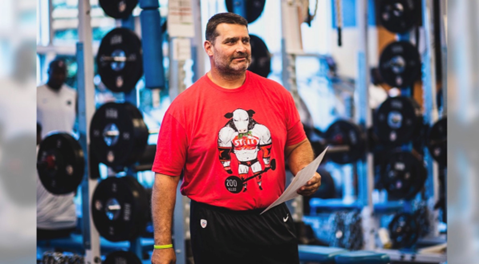
Having worked in both the team sports environment and now coaching athletes in one of the five strength discipline sports, you find that for all the similarities there are in training, there are also quite a few differences. The goal of all athletes is to maximize their potential. An improvement in overall strength, speed, and stamina can help them display a higher level of greatness. Depending on the sport, there are differences that need to be analyzed to benefit the athlete. Here are three of the major differences I found in training football players and strongman competitors.
The Practice Field
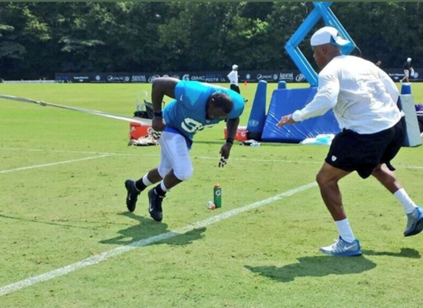
The first major difference is the level of importance the weight room carries in the true success of the sport. For the football player, the weight room is a place they have to go to, not necessarily a place they want to go to. What do I mean? The work done in the weight room supplements the actual skill development, fundamentals, and tactical schemes that are performed “on the grass.” The weight room is secondary to the specific skills needed to succeed on the field of play.
For the strongman athlete, the weight room IS the practice field! Everything that happens in the weight room has a direct correlation to success in competition. The strongman athlete is tested in feats of strength. The stronger the athlete becomes in the weight room, the greater the loads lifted in competition. This leads to higher placings.
How Strong is Strong Enough?
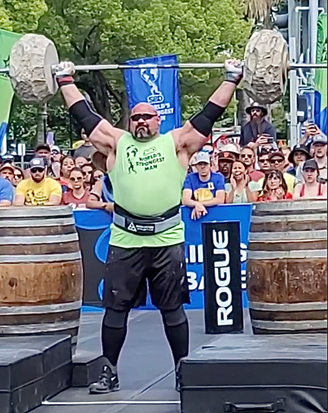
This question is asked continuously in team sports, especially with offensive and defensive linemen. Is a 10-pound improvement in a max squat actually going to make that athlete a better football player? Or, when an athlete reaches a certain level of strength, two times bodyweight squat max, for example, is it time to refocus on developing different types of strength? This is a constant debate in staff meetings across the country.
On the other hand, you can never be strong enough in the sport of strongman. Whether it is a one-rep max event or a repetition event, the strongest person acquires the most points. At the end of the event, the athlete with the most points is your champion. You can never be strong enough in the sport of strongman!
Conditioning Concerns
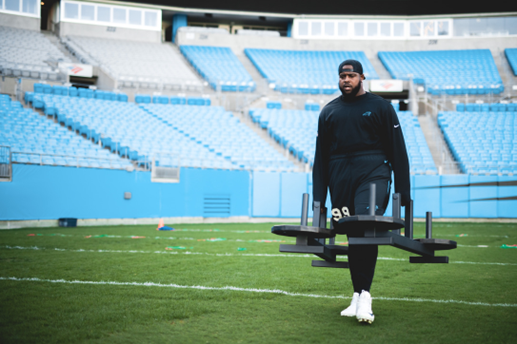
We all know the amount of conditioning needed for team sports athletes. It is a point of interest consistently on social media with the different philosophies, skills, and drills shown to the masses. Conditioning for a football player is usually at the forefront. The biggest differences between football players and strongman competitors are the total bouts of exercise as well as total volume, the physicality of the collisions versus the stress of lifting maximum loads, and the rise and fall of arousal throughout the duration of the competition.
Football is based on the total amount of plays in a game, both offensively and defensively, with the addition of special teams. Play drives, on average, can last between three and eight plays, with a work time of approximately 5 seconds and a rest time of close to 35 seconds. Some drives can be as short as one play and could go over fifteen. Most athletes play one side of the ball, so when one side is competing, the other side is resting. Special team players usually have one specific bout of exercise that happens at the completion of an offensive or defensive series.
Specific Conditioning programs are generally geared to more short, explosive bouts of exercise followed by a brief rest period. The goal of the program is to build a conditioning base for the athlete to be prepared to perform between 60-75 plays per game at a high level of relative intensity.
Depending on the competition, a strongman will need to be prepared for single or multiple-day competitions. A single day event usually consists of 5 events. The athlete performs the event, has a brief rest, and then begins prepping for the next event.
In a 2-day event, 2-4 events per day can be scheduled for consecutive days. Depending on the event and possible media restrictions, rest times could be extended. For the World’s Strongest Man competition, the athlete will perform three events per day for consecutive days, and if they make the finals (10 athletes), have a day off and then repeat the process to earn the title. Event start times are based on television, and there are usually longer breaks between events, especially in the group stages, where six groups have to complete each event before the next event starts.
The duration of a specific event is based on type of event. In a loading medley, where the athlete has to run with a specific object (3-5) and load them to a platform, the fastest time wins. Generally, you are looking at an event that can last between 30-45 seconds based on the athlete.
In a max repetition event, generally, there is a 60-75 second time limit. The athlete must perform as many repetitions as possible with a set load in the time allotted to earn an event win.
In a max effort event, the athlete generally will have three attempts to improve on the most weight lifted. The rest interval is based on the number of athletes in the event or group. In a max effort event, the time of work is the most similar to a football player, but the rest interval is far greater.
In some cases, there may be a “sprint” event where an athlete may have to perform a carry for a specific distance as fast as possible. The most popular is a Yoke Walk.
There are actually greater conditioning differences that the strongman competitor has to train when preparing for a competition versus the energy-specific demands of the football player. The strongman competitor can condition more specifically for their events in the noncompetitive stages of training by practicing the events at lighter loads and pushing goal times and rest times. Football players have to rely on different strategies to condition until training camp, where they are now in full pads and can condition their bodies to prepare for specific demands.
Summing It Up
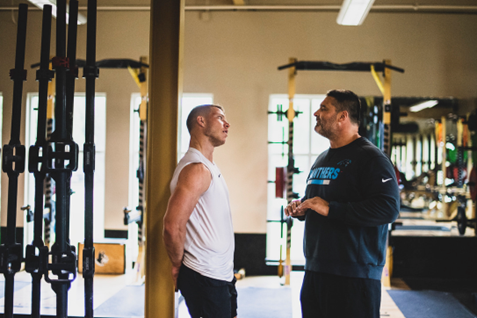
This is just a taste of what I have learned in the last two years evaluating the differences between these two great sports. I am still in search of the best approaches for athlete success. The key to coaching is asking questions, and they continue to search for answers. Communication between athlete and coach is crucial in either sport. Both parties have to continue to strive for best practices and create purposeful training plans for success. The key is a never-ending chase of discovery.








